|
Izhikevich's model was useful because it had already
implemented the simulation of chemical synapses. I simply
added the necessary cells to the SynStrength and SenseStrength
matrices. Since there was no sensory input, the SenseStrength
matrix was trivial. The SynStrength matrix was filled out as
follows (based upon the circuit diagram shown under the
Pyloric Circuit link): 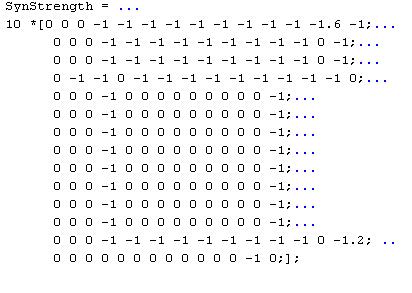
Note
the cells are in the following order: AB, PD, LP, PY, VD, and
IC. Izhikevich's model had one downside -- it did not
account for electrical synapses. The Pyloric circuit consists
of many electrical synapses, and this had to be accounted for
in the simulation. Since Ohm's law states that V=IR, then we
simply found Itrans = (V1-V2) * k ,where k is the conductance.
The voltage was then updated by simply adding or subtracting
the appropriate amount of current from the voltage updating
step: 
The
simulation then produced the following voltages (shown below).
The actual recorded voltages are shown beside for comparison: 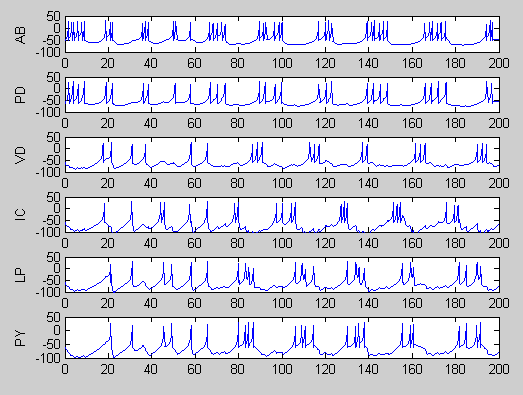
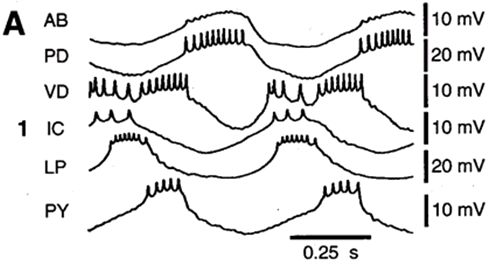
With
Dopamine in the Circuit, the empirical evidence produced the
following results (according to experiments by Professor
Harris-Warrick et al.): 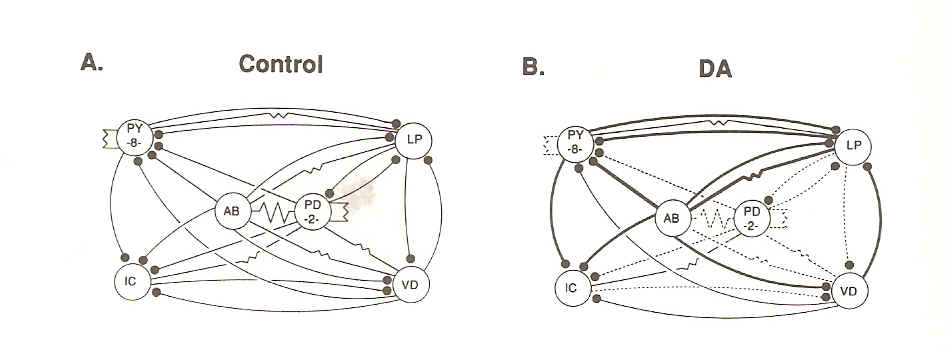
According
to "Distributed Effects of Dopamine Modulation in the
Crustacean Pyloric Network" by Harris-Warrick et al. the
following results should be obtained by dopamine in the STG: 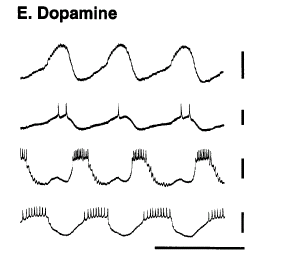
Changing
the synaptic strengths accordingly, the following graph was
produced: 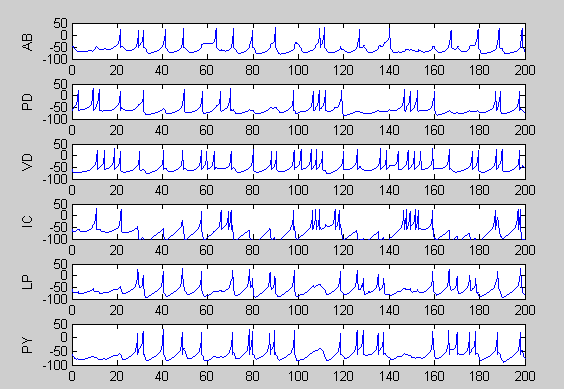
Notice
that even with much tweaking the desired effect is not
remarkably obvious. The greatest error likely is due to the
Izhikevich model itself -- since the model does not lend
itself to adjusting the internal currents individually. The
model simply lumps together the currents into to variables-- a
and b -- making the effect of dopamine very difficult to model
with this simulator. In order to open the files right click and select "Save Link As", then open the simulation with Matlab. For the source code for the
final simulation without dopamine click the link below: Simulation
1 For
the source code for the final simulation with dopamine click
the link below: Simulation 2
|